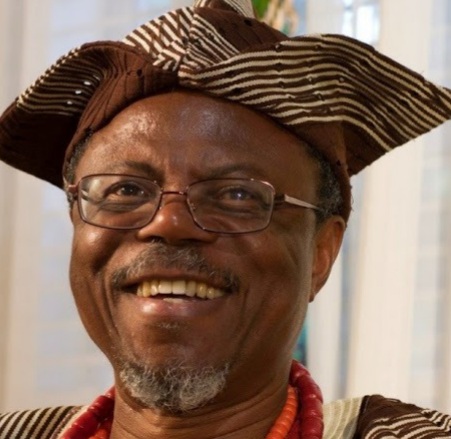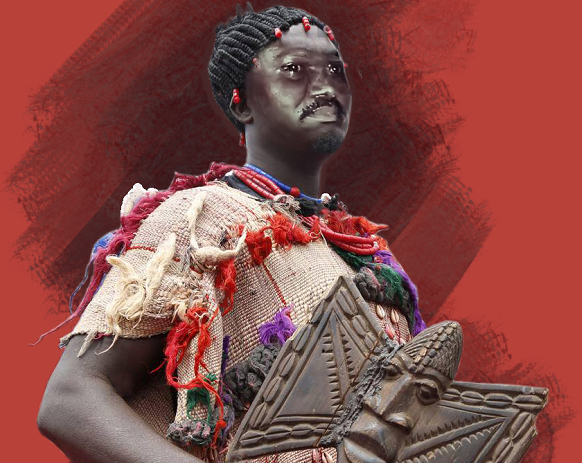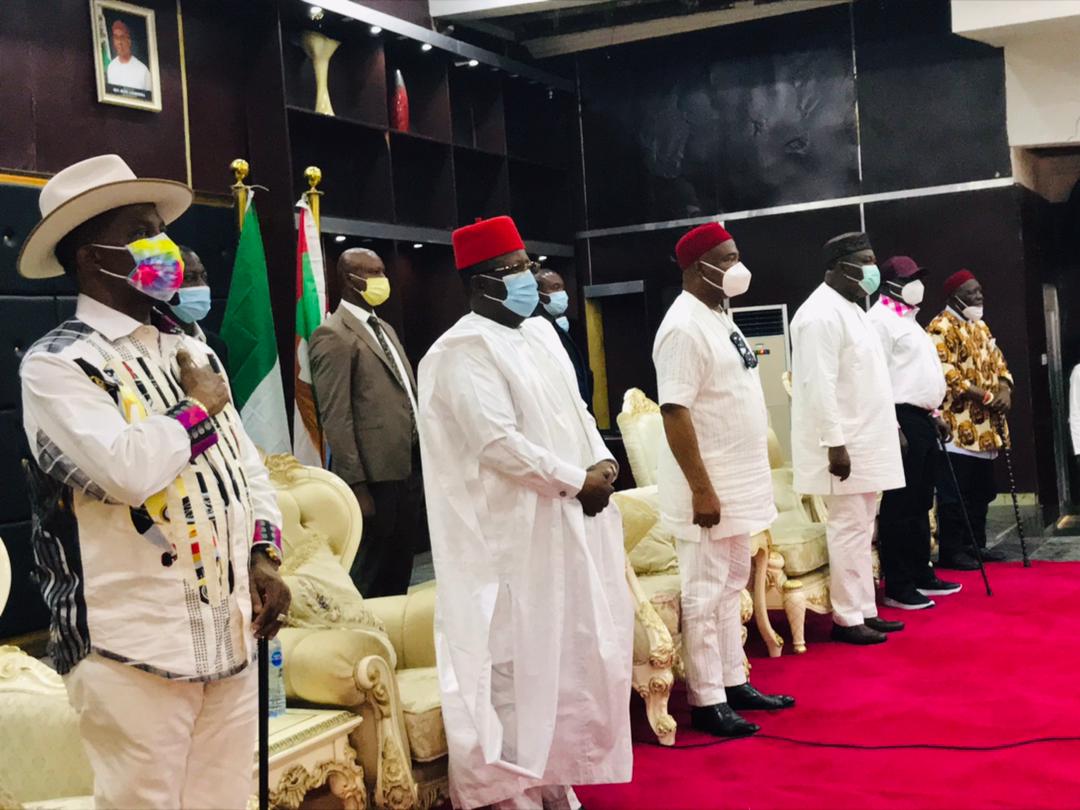The concept of the Yemisi Shyllon Museum of Art arose from an appreciation of the disconnect between the Nigerian people and their history and heritage. It is a timely and laudable initiative, coming when the country and its people are in dire need of a rallying sentiment to unite a nation stretched almost to breaking point by decades of un-nationalistic conduct. This commendable project will also instil in an increasingly disenchanted citizenry a can-do spirit drawn from the knowledge of a long-shared history and the ingenuity of their ancestors, as demonstrated by their artistic skill.
According to the famous Pan-Africanist, Marcus Garvey, “A people without the knowledge of their history, origin and culture is like a tree without roots.” Thus, the Yemisi Shyllon Museum of Arts represents an opportunity to provide a sure-footed generation of Nigerians, deeply rooted in their history—and how the world works—and drawing from such knowledge clarity and conviction required to set things aright.
Does art contain such capacity to inspire, some might wonder? What useful knowledge is there in the lost, discarded, buried, and forgotten materials of a long-dead generation? As a longstanding medium for expressing the “thoughts, emotions, intuitions, and desires” of artists (as members of society), art possesses the capacity to capture and reflect the mood of society—at least from the artist’s perception of it. This quality has imbued art with the capacity to reflect the changes in human society in the various stages of its evolution. It has also contributed to establishing artworks as an indispensable source for historical reconstruction and cultural interpretation, especially in societies where writing was not developed. And it is in this observed resourcefulness of art—as a store of historical/cultural evidence—that archaeology as an academic discipline is also anchored.
One fundamental characteristic of society (everywhere) is its non-static nature. Societies change over time, mainly in reaction to internal (social and environmental) and external (inter-group) dynamics. This transformation, which occurs in society’s organizational structure and cultural content, is defined in four (identified) stages of social evolution: hunting and gathering, pastoralism and nomadism, agriculture, and a stage of commerce. Also, it is reflected in the variance of their material culture from the stone age to the bronze and metal age. This material culture that encompasses the artistic expressions of these societies carries evidence of the changes in social order and the preoccupations of various stages of societal evolution. All these changes are documented in several pieces in the Yemisi Shyllon Museum of Art.
Advertisement
In African Art, Frank Willet observes that until recent times in the history of society, the story of humans has largely been about his interaction with the environment. In this preceding period, our ancestors developed various means of depending on the environment to ensure survival. In “traditional” Africa, predominantly ceremonial art played a key role in the ceremonies intended for such purposes. This is not subscribing to functionalist interpretations of African art as simply an outcome of aesthetic and creative appetites; rather, it acknowledges the predominant role art played in Africa’s social and economic systems, of which ceremonies formed an integral part. There were ceremonies for ensuring successful hunting expeditions, sufficient rainfall, fertile fields, bountiful harvests, protection, warding off bad spirits, and generally good fortune. For such occasion(s), special masks, drums, ceremonial apparel, and sculptures were employed in communication between the physical and spiritual realms following the provisions of traditional African mythology, which proposes a connexion between the world of the living and the netherworld.
Plastic art, as some have argued, was not well developed among earlier hunting and gathering groups such as the recovered objects in east and central Africa, as well as a later pastoralist and nomadic communities such as the Massai and the Fulani, whose migratory lifestyle—in search of game, freshwater, and pasture—did not encourage the creation of permanent settlements. This does not mean that these societies were devoid of art and artistic expressions. They mainly practiced other forms such as music, dance, narration, poetry, and glyptic arts like engravings and paintings on natural (rock) surfaces. Basketwork was a form of art that was (in some ways) attainable. The skill was developed to very high levels because of its lightweight, durability, and ease of transportation. Although the former can be practiced almost anywhere, the latter was carried out at centers where these groups repeatedly returned, converging in large numbers for marriage, initiation, and other such ceremonial rites. Such practices have accounted for the numerous (early) cave and rock paintings scattered around the arid regions of northern and southern Africa and some parts of east Africa.
The distribution of rock paintings and engravings among these African regions also follows the availability of natural shelter in caves that served the convenience of migratory groups. In East Africa and some parts of southern Africa, especially the savanna gap between forest and arid regions, mixed farmers and herders created a blend of material cultures. Therefore, the lighter the wood in the area, the less developed the sculpture and the more prominent the earthenware and beadwork. Subsequently, with the organization of human groups into settled agricultural communities, a stage marked by the domestication of animals and plant seeds and an expansion in the human population, there was an increase in the incidence of plastic arts—wood, ceramic, stone, and metal sculpture. As Willet notes again in his book, African Art, “It is the settled agriculturalists who have produced most of the well-known sculptures of Africa, especially from the rainforest.”
Advertisement
Three major factors contributed to the predominance of sculptural works of art south of the Sahara. One was the introduction and proliferation of iron tools which facilitated agricultural production. The second was the impact of an agricultural basis of community that permitted permanent settlements and the development of architecture, which created a demand for sculptors to produce architectural fittings such as doors, windows, house-posts, and other household furniture. Thus, it is observed that the most productive traditions have produced the finest African sculpture. The third important factor was the availability of wood (the chief sculptural material in the area). The variety and abundance of this material supported an extensive array of products and the development of sophisticated craftsmanhip. Some examples of these works are represented in the Museum.
Willet suggests a correlation between the existence of high quality and quantity of sculpture in the sub-Saharan region, the abundance of material, and the existence of elaborate political institutions. He quotes Fr. Kelvin Carroll’s assertion in Yoruba Religious Carving, which states that:
Constant suitable work is necessary for the full development of a carver’s abilities. It was the group of carvers in a district -repeating the same themes and only gradually introducing new ones – which built up a cumulative genius capable of supporting the less gifted carvers. It was… this evolution as a group, rather than the religious intensity or emotion of the carvers, which gave much of its artistic power to the old carving. If sufficient carvers could be- similarly employed – and fully employed – in modern conditions, the artistic level of the whole group would rise and individual geniuses would emerge.
Examples of wood carvings are in the Shyllon museum.
Advertisement
The next level in societal development is what is known as the “commercial stage”. This stage is one of the well-established networks of interaction, advanced metalwork, and greater cultural exchange (diffusion) between settled communities. It was a period that witnessed increased population density and competition for the control of unevenly distributed resources, which often assumed ideological dimensions with cultures vying for dominance. Internally, interactions took the forms of trade, diplomatic exchange, and war. Externally, the earlier Middle Eastern-North Africa cultural influence was driven by trade and diplomatic relations, expansionist, and proselytization (Christian and Islamic) campaigns. And then came the latter (modern) European influence, which also took the form of trade (illegitimate and legitimate), diplomatic relations, conquest, proselytization (Christian), and colonization. This period witnessed contact between different (material) cultures and saw the introduction/spread of new ideas, materials, and techniques to hitherto culturally distinct regions.
The introduction of Christian and Islamic worldviews into Africa, from the 2nd and 7th centuries AD, had significant influences on indigenous socio-cultural and economic practices, especially among the communities along the northern fringes (Ethiopia, Egypt, Nubia, and parts of northern Sudan) of the continent which were most exposed. In Ethiopia, where the emperor (Ezana) declared Christianity the state religion as early as the 2nd century AD, Christian traditions have continued to exist, only suffering a momentary decline in the 7th century in the face of Islamic expansion. The influence of Christianity on Ethiopian art was profound enough to split its art traditions into “Church art” and other forms of “popular” arts—basketry, textile, and jewelry—that share similarities with other traditions in the region. Thus, Ethiopia remains one of the best examples of Christian influence on African art and culture symbolized in artforms, including illuminated manuscripts, iconography, and the depiction of crosses in paintings and metalwork (as in currency and royal ornaments).
Also, the spread of Islam into the hinterlands of Africa as far as the southwestern region began with the conquest of most of northern Africa. From thence, the religion spread through trade and proselytization, first into parts of eastern Africa and gradually to West Africa. This normally followed a pattern where the ruler having converted (for several reasons, including key trade and diplomatic relations) is joined by his subjects. This way, Islam spread (at the expense of traditional African religions), carrying alongside it the cultural traits of (the Arabs) its originators, creating new, and transforming existing communities to fit Islamic models. As a result, Islamic calligraphy and architectural designs were adopted in these regions, phasing out traditional forms of artistic representations (particularly representational art), which were officially frowned upon in Islamic doctrine.
The halting of the first wave of Christian and Islamic “religious-cultural” expansion into the southernmost fringes of the African hinterland meant longer preservation of indigenous practices. This, alongside factors such as high levels of creativity, availability of materials, and the presence of well-established political institutions encouraging productivity, may have accounted for the large amounts of sculptures with a distinguishing level of sophistication in the sub-Saharan region, as symbolized by the Benin and Yoruba traditions which are dated over a thousand years old. Among these are also other sophisticated and antiquated traditions from the middle-belt regions of present-day Nigeria, such as the famous Nok Culture.
Advertisement
As a phenomenon spanning all four stages of societal development, art is an indisputable resource for evaluating extinct and extant societies. Every stage of societal development leaves an imprint on its art. According to Jess Castellote, the Director at Yemisi Shyllon Museum of Art, art’s deep role in traditional African social organization serves as a means of looking back in history at “the organizational structure of society; the culture, the religion, the philosophy and aesthetics.” It also offers itself as an important tool for dispelling unfounded claims of cultural superiority and inferiority. For an illustration, observing the changes in the hunting depictions in the rock and cave paintings of northern and southern Africa provides insight into the types of animals available and tools used in those regions at the time.
Likewise, the similarity in technique, material and cultural significance of artworks between the Yoruba of Nigeria and neighbouring Benin, Togo, and the Edo (Benin) of Nigeria reinforces the belief in a cultural connection. The recent phase of the “commercial stage,” often referred to as the “modern era,” has profoundly impacted traditional African art. It has exported African art traditions/forms (mostly through slavery) to other regions of the globe, introduced new ideas, and influenced how African art is perceived and studied.
Advertisement
With this brief introduction to aspects of African art, you can have a better appreciation for the Yemisi Shyllon Museum of Art.
(This is the second part of a series on The Yemisi Shyllon Museum of Art. Toyin Falola is a Humanity Chair and University Distinguished Teaching Professor, The University of Texas at Austin)
Advertisement
Views expressed by contributors are strictly personal and not of TheCable.
Add a comment







